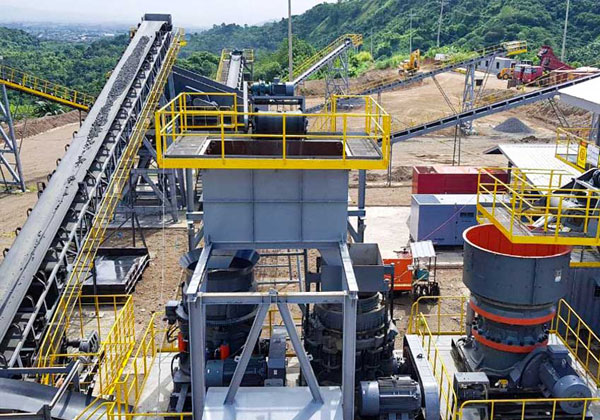Copper ore beneficiation is a crucial process in the extraction of copper metal from raw ore. The beneficiation process involves crushing, grinding, and other physical or chemical treatments to increase the copper concentration and remove impurities. One of the most important stages in copper ore beneficiation is crushing, which prepares the ore for subsequent processing steps by reducing it to smaller, manageable sizes.
Why Crushing is Important in Copper Ore Beneficiation
Copper ores usually come in large chunks mixed with waste rock (gangue). To liberate copper minerals from the ore and prepare it for further processing such as grinding and flotation, the ore must be crushed. Proper crushing ensures:
-
Efficient liberation of copper minerals.
-
Optimal particle size distribution for grinding mills.
-
Improved separation efficiency in beneficiation processes.
-
Reduced energy consumption in later stages.

Types of Crushers Used in Copper Ore Beneficiation
Different crushers are employed depending on the ore characteristics, feed size, and desired product size. Here are common crushers used in copper ore beneficiation:
1. Jaw Crusher
-
Role: Primary crusher
-
Application: Suitable for coarse crushing large copper ore rocks.
-
Working Principle: Uses compressive force to break ore by pressing it between a fixed and a movable jaw.
-
Advantages: High crushing ratio, simple structure, reliable performance, easy maintenance.
-
Typical Output Size: 10-300 mm
2. Gyratory Crusher
-
Role: Primary crusher alternative to jaw crusher
-
Application: Used for large capacity crushing, especially for hard and abrasive copper ores.
-
Working Principle: Rock is crushed between a fixed outer surface and a moving inner cone.
-
Advantages: High throughput, continuous operation, suitable for hard ores.
3. Cone Crusher
-
Role: Secondary or tertiary crusher
-
Application: Used to further reduce the size of ore after primary crushing.
-
Working Principle: Crushing by compressive force between a mantle and a bowl liner.
-
Advantages: High crushing efficiency, produces uniform particle size, suitable for medium-hard ores.
-
Typical Output Size: 3-30 mm
4. Impact Crusher
-
Role: Secondary crusher
-
Application: Used for softer copper ores or for producing finer crushed material.
-
Working Principle: Ore is crushed by impact forces generated when the ore is struck by high-speed rotor hammers.
-
Advantages: High reduction ratio, produces good cubical shapes.
-
Limitations: Not suitable for very hard ores due to wear.
Selection Criteria for Crushers in Copper Ore Beneficiation
When selecting a crusher for copper ore beneficiation, several factors should be considered:
-
Ore hardness and abrasiveness: Harder ores require crushers with high strength and durability.
-
Feed size: Size of the ore chunks from mining operations.
-
Required product size: Size to which ore must be crushed before grinding.
-
Capacity requirements: How much ore must be processed per hour.
-
Energy efficiency: Crushers with lower energy consumption help reduce operational costs.
-
Maintenance and operational costs: Easy maintenance and reliable operation reduce downtime.
Crushing Process Flow in Copper Ore Beneficiation
-
Primary Crushing: Large copper ore rocks from the mine are fed into a jaw or gyratory crusher.
-
Secondary Crushing: The crushed ore is further reduced in size by a cone or impact crusher.
-
Screening: Crushed ore is screened to separate suitable sizes for grinding.
-
Grinding and Beneficiation: The crushed ore is sent to mills for grinding, followed by flotation or other beneficiation processes to extract copper minerals.
Effective crushing plays a pivotal role in copper ore beneficiation, ensuring efficient downstream processing and maximizing copper recovery. Choosing the right crusher — jaw, gyratory, cone, or impact — depends on the ore characteristics and processing needs. Proper crushing equipment selection improves productivity, reduces costs, and ultimately supports the sustainable extraction of copper from its ore.
